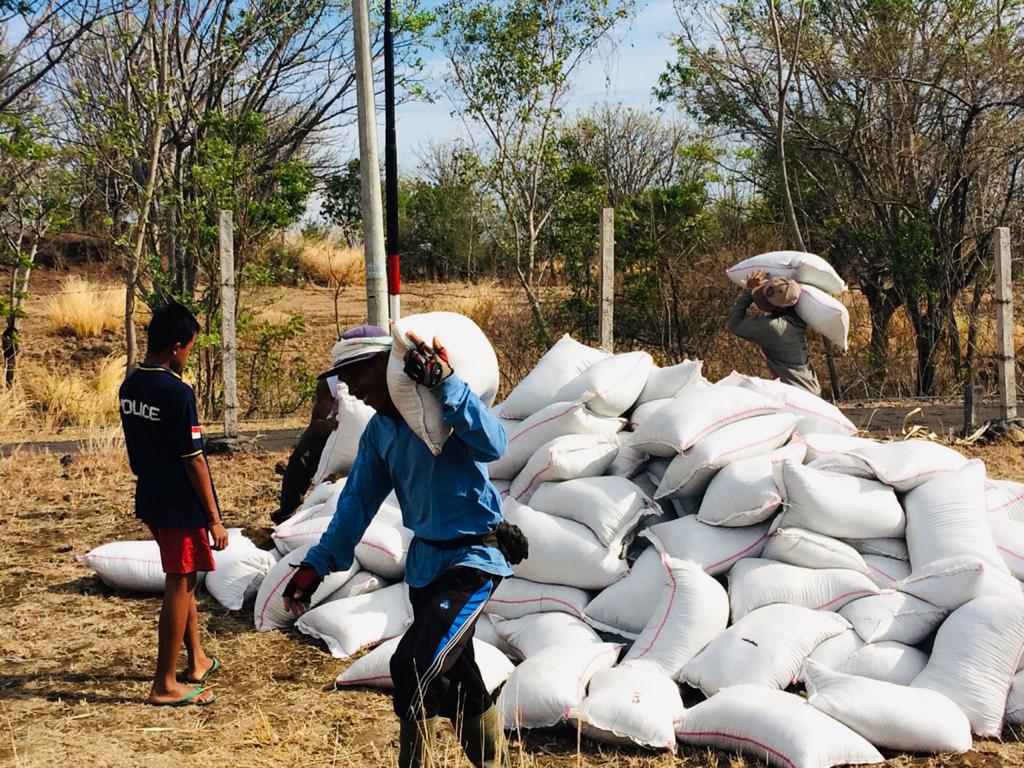Q1 Dry Land Agricultural - Pilot Project
Location : Batu Belah, Karangasem – Bali
Damara Bali Foundation, is piloting a Dry Land Agricultural project in a dry area located in Batu Belah, Datah Village, Karangasem, Bali. If this project is successful, it will be replicated and applied by farmers in other dry areas.
What is ‘Dry Land Agriculture’?
Dry Land Agriculture is the cultivation of agricultural crops on land that has less water and is less fertile.
Dry land is characterized by low rainfall (<250-300mm/year), drought index or comparison between rainfall and evapotranspiration less than 0,2. Very limited plant variations can survive this low water (only shrubs, grasses, and small trees) and very high temperatures (+40oC in summer).
Soil texture is sand and high salinity in the soil and groundwater, caused by high evaporation and infiltration. This dry land occurs as a result of very low rainfall, so that the presence of water is very limited, high temperatures and low humidity. Dry land is often found in areas with permanent anticyclone conditions, such as those in tropical anticyclone areas. The area is usually characterized by a counterclockwise wind cycle north of the equator and clockwise winds in the south of the equator.
So what is Damara Bali Foundation doing?
The primary factors that plants need to grow are planting media, water, light, wind, and plant nutrition. All factors needed by plants to grow properly are hampered by the condition of dry land areas that have extreme climate and weather. The solutions that have been carried out by the Damara Bali Foundation involve:
- Planting Media
- Water Management
- Fertilizer and irrigation
1. Planting Media
Sandy soil which is found in most arid regions, becomes a major obstacle for the business of plant growth. The constraints are large soil pores which cause high infiltration so that they can’t hold water and have a combination of high evaporation due to high temperatures and high infiltration due to overly porous soil. To overcome this, soil amendment is needed – organic fertilizer to increase soil fertility, and lime to increase soil pH. Soil processing is done with tractor plows that aim to loosen the soil, to improve air circulation.

2. Water Management
Low rainfall that is characteristic of dry land areas causes the availability of water for irrigation to be very limited. To overcome this, soil amendments are needed to increase the soil holding capacity (Water holding capacity), mulch to reduce evaporation and the use of an appropriate irrigation system namely drip. The appropriate irrigation system aims to save water use and improve the effectiveness and efficiency of plant nutrient distribution.

3. Fertilizer and irrigation
Fertilization is a system that is carried out in conjunction with irrigation activities. This system is effectively and efficiently applied to the drip irrigation system. The tricks are to stir the fertilizer that you want to add to the water that is ready to be applied to irrigate the plants.
Currently the type of plant being developed is:
Hybrid coconut, Chili, Eggplant, Water spinach, and sweet potato.

